“Cut it here,” he said. I was working at the family business, a retail nursery in Alameda, California. It was 1993. A man I had not met before was offering me pruning advice, and the advice was good. “Cut it here,” he said again, pointing to another branch.
The man had a long name – Boonyarat Manakitivipart. I knew him as Boon. Boon often found me in the back of the nursery, pruning or nursing unwell trees back to health. Originally from Thailand, Boon was an ornamental tree pruner who’d recently moved to the area from San Francisco.
One day he pointed to a neglected bonsai at the nursery, a Japanese black pine, and offered to style the tree. “Style the tree?” my father asked. “Wire and prune the tree, make it pretty,” Boon said. That didn’t clear anything up, but my dad said OK.
A week later Boon returned with the tree. He had dramatically thinned it and wired the remaining branches into a curious shape. I can’t say I liked the tree, but something about it intrigued me.
Over time I got to know Boon. His passion was bonsai. Would I be interested in coming with him to a bonsai club meeting? It hadn’t occurred to me that there were clubs for these things. I said yes out of curiosity, and the next week we visited Merritt Bonsai Club.
It wasn’t what I expected. We showed up late and walked in on a heated discussion. More of a tirade, really. A club member was taking the club president to task for not doing more to engage the bonsai community. Meanwhile, club members sat at tables quietly working on their trees. Boon and I found an open table and joined in.
Around that time, Kathy Shaner began teaching a class in Boon’s backyard. I couldn’t afford the class and lacked the trees to work on, but I attended each month to help out and learn what I could. It was at these workshops that I began to learn about bonsai in Japan.
Five years later, I had the opportunity to visit Japan with Boon, Morten Wellhaven and Randall Lee. It was an incredible trip and the trees were beautiful.
—
That’s how I “got into bonsai,” but it’s not the whole story. It may have started earlier.
Before they dated, when my parents were still in school, my father gave my mother a bonsai, a Japanese plum.
I was surrounded by bonsai in my parents garden before I knew what they were. Most sat on the ground in wooden containers built by my father. By the time I was old enough to notice, only the plum remained. The tree was in the backyard throughout my childhood so I grew up knowing what bonsai was, but I didn’t give much thought to it until I saw the pine that Boon had styled.
—
Winter, 1994, I found myself at Boon’s kitchen table planting pine seeds. By then I’d joined a club and browsed some bonsai magazines, but the bulk of my bonsai knowledge was limited to plant care I’d learned at the nursery. Boon, too, was fairly new to developing bonsai from seed. Our primary guide was a pair of articles in Bonsai Today – it was a good starting point.
I spent that summer in Greece and Turkey. I’d cut off the seedlings’ taproots before leaving and worried they might not make it. I remember calling home and asking about the pine seedlings. My mom had offered to water while I was away. They were doing well.
My collection grew while the pines matured. I learned about wiring and repotting, cutback and display. I visited local shows and returned to Japan. Along the way I sold a few pines to friends.
I am fortunate to have grown up in a nursery family and to have learned so much from my father. I am lucky, and grateful, to have received guidance from Boon, Morten and Kathy from the very beginning. Without these starting points, I wouldn’t be writing this.
And then there are the pines. I owe much to planting them when I did. From them, I’ve learned to appreciate the subtle growth characteristics that vary from tree to tree. I’ve learned how present actions affect future growth and I’ve enjoyed seeing the trees develop over time. I’ve been able to experiment with different approaches to common problems, and I’ve learned from seeing friends work on similar trees they developed themselves.
I took a writing class with Maxine Hong Kingston in college. After suffering great loss in a fire, she noted that all she had left were the items she’d given away. The sentiment has stuck with me, and to this day, I really enjoy seeing trees I helped start in friends’ collections. I like that I don’t know exactly how the trees have taken their present shape, and I like that I don’t know what’s going to happen next.
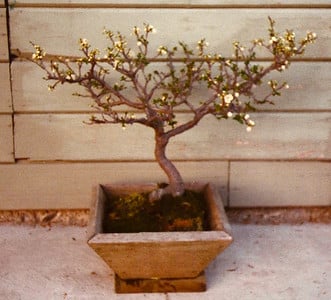
Japanese plum, 1976
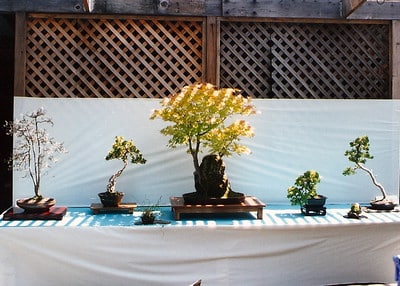
Bonsai display by Boon Manakitivipart and Morten Wellhaven, mid 1990s
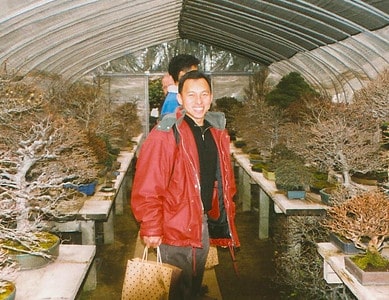
Boon at Takeyama’s garden in Omiya
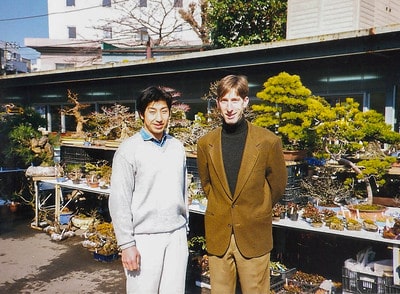
With Yosuke Omizu at the Green Club, Tokyo, 1999
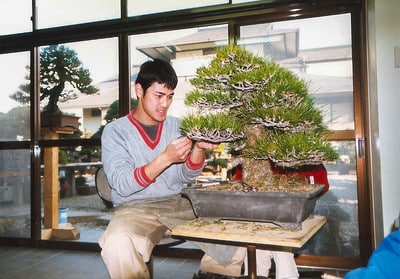
Meeting Daisaku Nomoto at Kihachi-en in Anjo
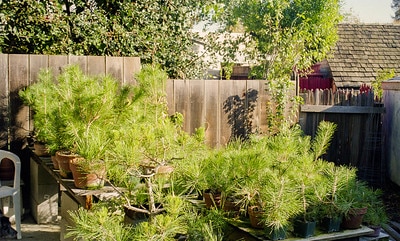
My first batch of pines, late 1990s
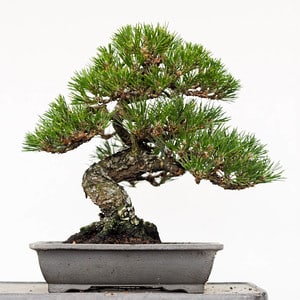
One of the above pines as displayed in 2010
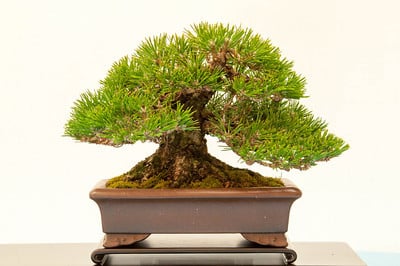
One of the above pines as displayed in 2014
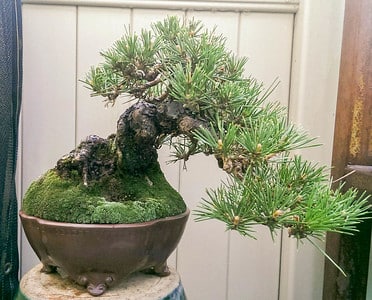
Another pine from the same batch – developed in a friends’ collection for the past 10 years
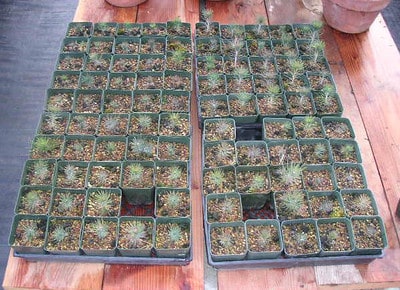
The next batch – 1-year old pine seedlings, 2005
Subscribe to Bonsai Tonight
New Posts Delivered Every Tuesday and Friday
Greg wentzel says
Great post. I think everyone should try growing trees from seed. You can learn so much.
Nathaniel rhett says
Great read, I always wanted to know your origin story. Continue the great works and can’t wait to see your trees at the artisan cup.
Ben says
A fascinating post. Thanks Jonas.
Marc says
A great story Jonas!
This is how Bonsai grows from seed…not just trees.
Brian VF says
Thanks for the great story Jonas. Cool that the JBP that appeared on the postage stamp was one you grew from seed!